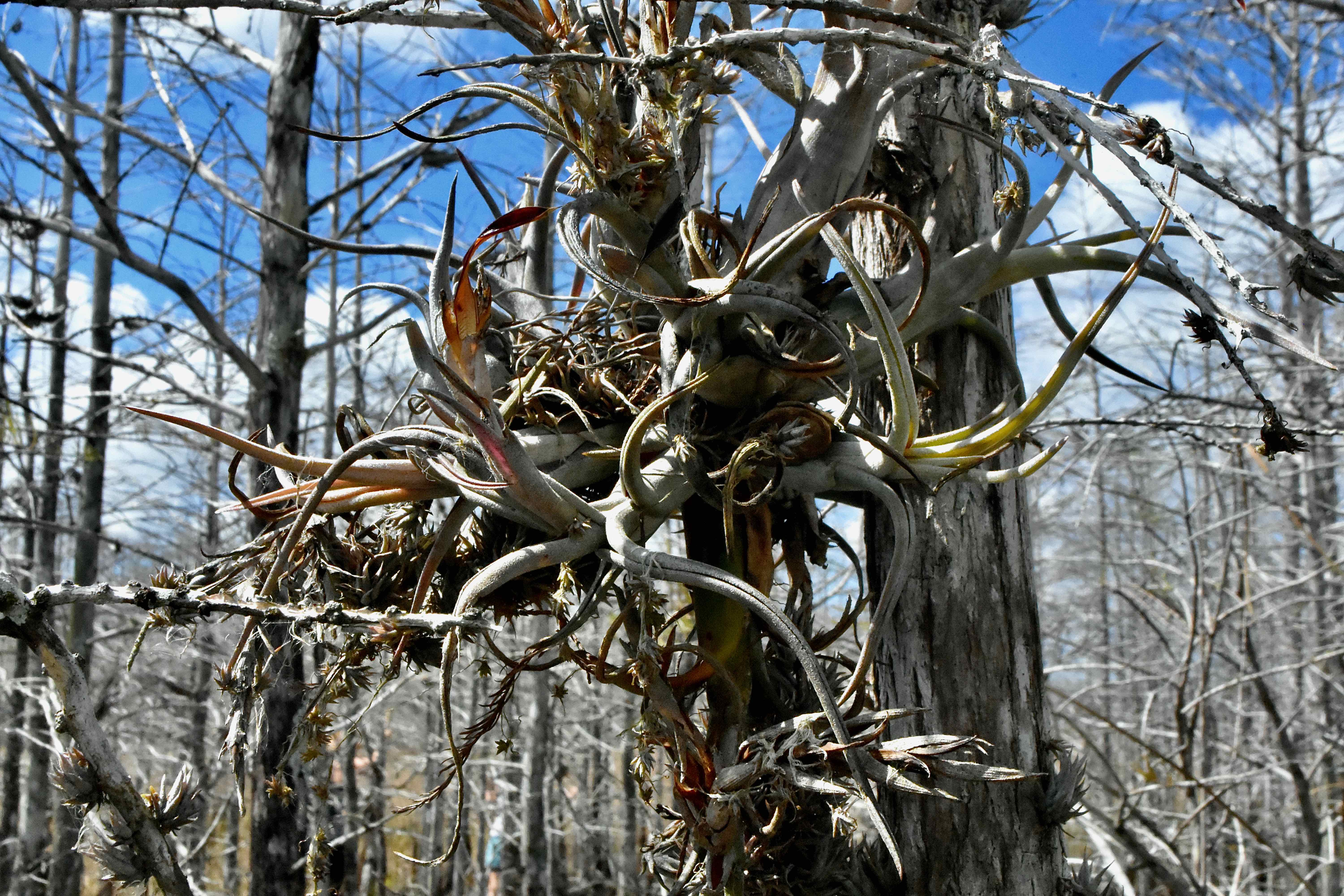
Potbelly airplant, photographed at Loxahatchee Slough Natural Area, Palm Beach Gardens, Palm Beach County, in February 2022.
Potbelly airplant, Tillandsia paucifolia. The combination of the common and scientific names provides a fairly accurate description of this plant.
Potbelly refers to its somewhat enlarged base, while paucifolia refers to the few number of leaves it produces. Members of Tillandsia, of course are airplants, or epiphytes. Put them together and you have an airplant with an enlarged base and few leaves.
In any case, potbelly airplant is one of 16 airplants native to Florida. It’s found mostly in the southern end of the Peninsula roughly from Brevard County to the Keys on the Atlantic side of the state and from Charlotte County south on the west. It is on the rare side north of Lake Okeechobee.
Florida is the only state where potbelly airplant is found, but its range extends southward through the Caribbean, Mexico, Central America and South America.
Like all of its cousins, potbelly airplant is an epiphyte; it grows on a host plant, usually a tree or shrub, but uses the host only as a base, a place to live. Airplants are not parasites; they take nothing from the host. Instead, they take moisture and nutrients from the air or whatever water and detritus falls within their body.
Potbelly airplant is what’s known as a tank epiphyte, or tank airplant. Water and debris collects at the base of its leaves; special cells absorb the moisture and nutrients the plant needs to survive.
Unlike many of its airplant cousins, it is not state-listed as threatened. However, like many of its airplant cousins, it is vulnerable to the Mexican bromiliad weevil. This beetle, which hitchhiked a ride on some imported bromiliads decades ago, uses bromiliads as a host plant for its eggs. When the larvae hatch, they bore into the leaves of the host and begin to eat away, eventually killing it from the inside.
Potbelly airplants are relatively small, however, and that makes it less vulnerable to the weevil than larger member of Tillandsia. It goes between four and 14 inches in length and produces between five and 10 scaly, silvery-gray leaves that twist and curve, tapering to a sharp point. The taller end of its range come when it is in bloom. Potbelly airplants make their homes on the branches and trunks of trees, particularly cypress. It can be found growing singly, as shown in the photo at the bottom left, or in clusters, as shown in the photo at the top of this page.
Flowers are lavender to blue in color but small atop two to four flower spikes about three inches long. Each spike has as few as two and as many as 14 flowers. Like the flowers of airplants generally, the real show is the bright red bracts that surround them. Potbelly airplant blooms spring into summer.
Potbelly airplant is found in coastal strands and hammocks and brightly exposed spaces. We’ve found it as far inland as Loxahatchee Slough Natural Area and J.W. Corbett Wildlife Management Area.
It is cultivated, used in restorations and natural landscapes. It’s also grown by hobbyists. Scan the internet and you’ll probably come up with a few dealers. Otherwise, it’s not used by us human types.
Potbelly airplant is a member of Bromeliaceae, the airplant family.
Loxahatchee Slough Natural Area



